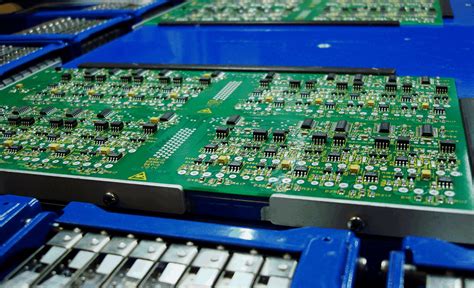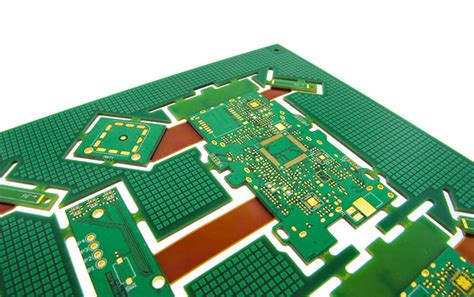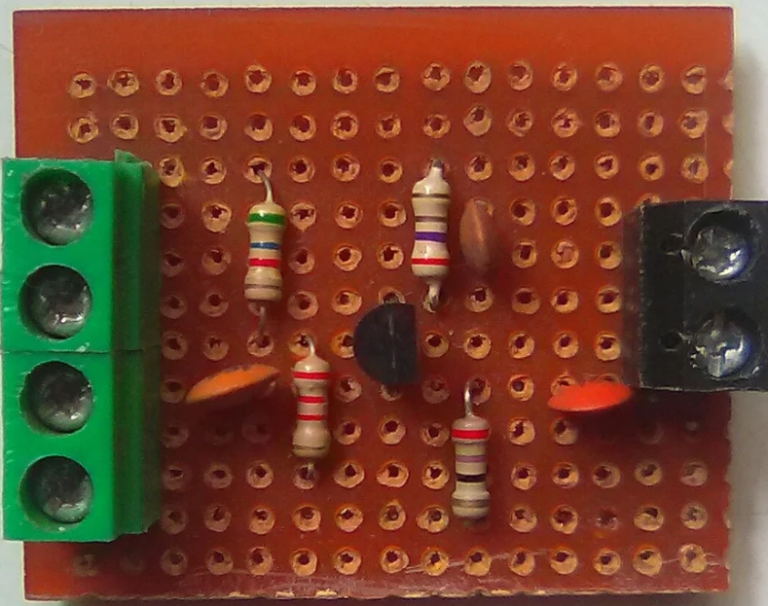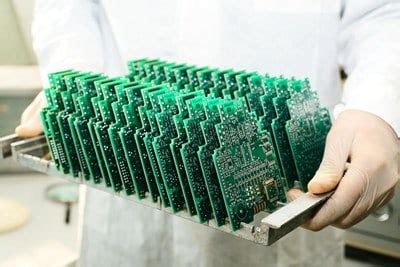PCB industry reshuffle: environment protection tightens and raw material prices rise
Since 2018,China has vigorously implemented environmental protection regulations,and the most notable things include two things:
one is whether the normal production of overseas PCB industry has been affected, and the other is that small and medium-sized PCB factories in the mainland are unable to bear the load and therefore close the factory, and the direction and speed of the entire Chinese PCB industry order.
Judging from the current situation of strict environmental protection regulations in the domestic PCB market, it is indeed helpful for environmentally compliant medium and large PCB manufacturers to receive orders, and it is helpful to improve the oversupply of market capacity, but the premise is that environmental protection audits are implemented in the mainland, but the order transfer effect will not appear quickly in the short term.

At the same time, the market demand for PCBs is also increasing significantly, especially after the commercial use of 5G next year, coupled with the current expansion of demand in the automotive market, the overall market demand is also expected to increase. The reasons behind the price increase of PCBs, in addition to the increase in market demand, also include environmental protection and the price increase of upstream raw materials. A PCB industry reshuffle centered on environmental protection has begun, which is undoubtedly good news for leading enterprises. At the same time, due to the high requirements for PCBs in the automotive and 5G communication markets, leading enterprises will benefit. Driven by the two, the PCB industry reshuffle process is accelerating.
1.Supply-side reform tightens environmental protection: small and medium-sized manufacturers cannot get waste control licenses
First of all, let’s look at environmental protection issues. The strict implementation of environmental protection laws and regulations has further caused Shenzhen Daxin, a PCB factory under Jiantao Group, to be unable to continue production due to non-compliant pollution discharge.
It will be closed and dissolved before September 30, becoming the first PCB factory to close due to the tightening of environmental protection inspections in the mainland. Although the PCB industry has different interpretations of Jiantao’s actions, and even directly pointed out that Jiantao Group is taking this opportunity to close and dissolve old factories that are not in line with operating benefits, the strict implementation of environmental protection inspections in the mainland is a fact, and the increase in pollution discharge and waste treatment costs for Taiwanese businessmen is expected to increase as a result.
The PCB industry pointed out that the origin of the current sewage discharge problem in the mainland and the solution to it is that since Taiwan PCB factories have been operating in the mainland China market for many years, the originally approved sewage discharge volume has reached the critical point of the permitted volume.
As a result of years of expansion, the wastewater generated by the intermediate process has increased significantly. Therefore, each factory is currently making all-out efforts to improve the “recycled water” recovery generated by the intermediate process to effectively control the external sewage discharge volume to meet the original approved emission license emission standards and emissions. Of course, the increase in recycle water treatment facilities will also increase the cost expenditure and burden.
As early as mid-July, Mobile News Online reported that domestic PCB manufacturers had increased costs due to environmental issues and the rise in raw materials such as copper (copper clad laminates, copper foils), so there was a collective price increase. Since July, PCB factories including Omway Electronics and Jiantao Group have issued price increase notices; as for the Taiwanese factory side, according to industry sources, there is still a lot of idle production capacity, and it is not easy to follow the price increase at this stage.

First of all, regarding the price increase of raw materials, copper prices are the most concerned.
The rise in copper prices has significantly increased the costs of copper foil substrate manufacturers and PCB manufacturers. According to industry statistics, the cost of PCB raw materials accounts for 33%, of which the cost of raw materials for thick copper copper foil substrate accounts for 18%-20%. In addition, copper foil accounts for 30% of the overall cost of thick copper copper foil substrate.
In addition, in recent years, the domestic market has strengthened its environmental awareness, from the emission restrictions in Kunshan, Jiangsu at the end of 2017, to the emission restrictions in Zhuhai and Shanghai, and then to the strict inspection in Shenzhen. Based on the sewage discharge problem of the PCB industry, at this stage, PCB factories, whether Taiwanese, mainland, or even foreign-funded, are unpopular industries in the mainland. For this reason, PCB manufacturers have to face the pressure of continued cost increases, and production capacity has to be continuously reduced, and even eventually face the pressure of leaving.
Therefore, after the PCB industry has the pressure of increasing raw material costs internally and the problem of limited production capacity due to environmental issues externally, some PCB companies in the palace have begun to notify customers of price increases since July. As for the Taiwanese factories, due to the unsatisfactory demand, the production capacity is still limited. In addition, the price increase trend of copper foil substrate factories in the second quarter of this year is not obvious. Therefore, the industry believes that it is too difficult to follow the price increase at this stage.
Regarding the price increase news, according to the mobile phone newspaper online, the basic reasons for the price increase are mainly the above two. On the one hand, it is the increase in raw materials, and on the other hand, it is because the environmental protection department has very strict emission restrictions.
In addition, in early August, the Shenzhen Human Settlement Committee issued the “Notice on No Longer Accepting Applications for Strictly Controlled Waste Treatment Administrative Permits”.
The notice stated that according to the “Decision of the Guangdong Provincial People’s Government on Repealing and Amending Some Provincial Government Regulations” promulgated by Guangdong Provincial People’s Government Order No. 242, the “Guangdong Provincial Strictly Controlled Waste Treatment Administrative Permit Implementation Measures” was officially abolished from July 20, 2017, and the list of strictly controlled wastes and the administrative permits for strictly controlled waste treatment were officially cancelled. Our committee will no longer accept applications for strictly controlled waste treatment permits from the date of the entry into force of Guangdong Provincial People’s Government Order No. 242.

2.Strong demand for PCB: The industry chain benefits collectively
It is understood that the PCB industry will enter the peak season of market demand in the second half of the year, but the first to see the strengthening in the third quarter is the demand for upstream copper foil, glass fiber cloth and copper foil substrate (CCL), especially the current glass fiber cloth factory is still in the dilemma of tight supply of raw material glass fiber yarn, and the product price is imminent; copper foil factories are due to the accelerated demand for copper foil from electric vehicle lithium batteries and PCB factories, forming a prosperous market demand.
Li Sixian, general manager of Jinju Development, a copper foil factory, pointed out that Jinju’s processing fee in the second quarter of this year remained at the same level as the first quarter. The third quarter entered the peak season for PCB. With the emergence of market demand, the processing fee will remain stable, which is conducive to boosting profits in the third quarter.
As for the supply of fiberglass cloth, the supply of raw material fiberglass yarn has been tight since the fourth quarter of last year.
This phenomenon has not been improved so far. In the second quarter of the market off-season, the price of electronic-grade fiberglass cloth remained unchanged without a strong upward trend, but both Fuqiao and Dehong are optimistic about the peak season effect in the third quarter, which will push up demand steadily and drive up prices.
Fuqiao’s automotive sheet applications accounted for 45% last year, and the shipment proportion ranked first.
With the deepening of automotive electronics, the proportion of automotive applications will continue to increase. Fuqiao invested NT$1.65 billion in Dongguan to set up 360 looms. The production capacity will be fully opened in the first quarter of 2019, and the application market of automobiles and servers is also targeted.
As for PCB full-process factories, the third quarter is the beginning of the peak season, and the fourth quarter is the busiest season of the year.
Relatively speaking, Apple’s iPhone 8 and iPhone X have adopted SLP design since last year. Xinxing, Huatong and Zhen Ding are all suppliers. This is the second year of production for Apple. The yield rate should be greatly improved. The third quarter will help to inject profits, but because SLP consumes too many intermediate processes, it will squeeze out the production capacity of HDI (high-density interconnection board); legal persons are optimistic that Jian Ding’s expansion of 600,000 square meters per month last year will be enough to take orders for HDI boards.
As for PCB equipment, the third quarter was originally the peak season for delivery.
After the monthly revenue of AOI equipment manufacturer Mok-Tech hit a record high for 13 consecutive months, General Manager Chen Fusheng is still optimistic about the economy in the third quarter; as for Xunde and Qunyi, they will have a wave of delivery to the new plant of semiconductor and flexible board manufacturer Jialianyi Guanyin in the third quarter, which will significantly improve their performance.
PCB upstream raw material manufacturers including Lianmao, Taihong, and Fuqiao have newly added factory expansion projects in mainland China, with investment scales starting from NT$1 billion. The main purpose is to use new production capacity to meet the demand for high-frequency, high-speed, and safety-certified high-end electronic materials. The new production capacity will be put into production in 2019. Each factory is eyeing the needs of automobiles, 5G communications, and cloud storage servers. The biggest driving force behind this comes from the domestic demand trend of “Made in China 2025”.
In addition, as the US-China trade war continues, the country has realized that including mobile phone chips and high-end electronic materials cannot be controlled by foreigners, so it promotes the localization of high-end electronic materials in China. Many industry insiders believe that such investment is in line with the trend of “Made in China 2025”. Replacing imports with local domestic production will help to fully grasp the huge domestic market opportunities.
Among these manufacturers, CCL manufacturer Lianmao Electronics has the largest investment, investing up to NT$1.8 billion in Jiangxi to expand production.
The expansion of production capacity is to respond to the growth of high-frequency material demand driven by 5G, electric vehicles and the Internet of Things. The new production capacity will be opened in the middle of next year. The growth trend of the automotive PCB market has taken shape, and all PCB manufacturers are actively developing in this direction. However, this year, two major obstacles, including the appreciation of the New Taiwan dollar and the shortage of passive components, have caused great trouble for all manufacturers.
Taiwan PCB’s customers in mainland China account for up to 40% of FCCL’s revenue.
It has invested 1 billion yuan to set up a new plant in Rudong County, Nantong City, Jiangsu Province. It is expected to be completed in the first quarter of 2019 and is expected to start production in the second quarter of next year to contribute revenue. Taiwan PCB’s new plant is mainly in response to the rising demand for flexible board applications such as automotive electronics, which prompted Taiwan PCB to actively invest in Nantong to establish new production capacity.
The automotive board market is growing steadily and is optimistic.
Despite the short-term obstacles such as rising raw materials and appreciation of the New Taiwan dollar, PCB manufacturers in the industry have not given up. Industry insiders believe that the demand for automotive electronic boards is rising, mainly due to the deepening of vehicle electrification, coupled with the increasing penetration of automotive electronic auxiliary detection systems such as automotive radar and advanced driver assistance systems. Jingpeng has obtained a 13% market share in the global automotive board market. In addition, PCB manufacturers are also striving to obtain customer certification. Songshang Electronics has announced that it has obtained Tier 1 automotive electronic system factory certification. Coupled with the rising demand in the mainland electric vehicle market, Songshang’s PCB business will have double-digit growth this year.
In 2015, Zhichao bought Hitachi Chemical’s PCB factory in Kaohsiung, Taiwan for 257 million yuan and became an independent Zhiyu Technology, allowing Zhichao to further enter the automotive board market. Zhiyu has recently increased its capital through cash and acquired equipment, preparing to take a big step in the automotive board market based on the original market foundation, which is expected to make up for the current stagnation in the growth of NB board business.

3.5G is accelerating: it may trigger a reshuffle of the PCB raw material industry chain
In addition, not only the automotive market, but also in the consumer electronics market such as smartphones, with the upgrading of technology, new demands have been put forward for PCBs. After 5G is commercially available in 2018, this communication technology revolution will trigger a reshuffle of the PCB raw material supply chain.
This year, Jialianyi reportedly received an order for Apple’s iPhone soft board antenna, which caused its stock price to rise by as much as 70% in the short term. Jialianyi also wants to seize the opportunity to turn around through the production of this product and immediately tap into the huge market demand for 5G communication soft boards. Therefore, the market is concerned about which supplier provides the special liquid crystal material (LCP) substrate used by Jialianyi to produce soft board antennas?
According to the verification results, Jialianyi’s LCP substrate does not come from the current listed FCCL factory, but from Jiasheng Technology, which is also established in Guanyin, Taoyuan, like Jialianyi’s new factory. Jiasheng has always been a supplier of Jialianyi and Japanese soft board manufacturer Flagship, and is not a listed company; even if Jiasheng is an existing supplier of Jialianyi, Jialianyi uses the LCP substrate of soft board antennas. Facing the requirements of high frequency, high speed, impedance value, etc., Jialianyi also re-specified the specifications to meet the needs of soft board antenna production.
It is reported that the flexible board antenna is not a new technology. In the past, Apple’s iPhnoe products have also adopted it.
However, as wireless communication products evolve from 3G to 4G, and even the upcoming 5G communication, the product specifications are more stringent. Only with the flexible board antenna can the demand for higher frequency and high-speed transmission be met.
Jia Lianyi’s use of LCP substrate to produce flexible board antennas is just an example.
Other upstream raw material manufacturers of PCB flexible and hard boards, such as glass fiber cloth manufacturer Fu Qiao, copper foil manufacturer Jin Ju, Rong Ke, FCCL manufacturer Taiyao, Lianmao, and even Taihong, are also trying to enter the raw material demand in the 5G communication field.
Taihong has not entered the LCP material market, but mainly produces heterogeneous PI (Modify PI) substrates with price competitiveness.
It is expected to aggressively attack the non-Apple mobile phone camp market from next year. Taiyao has adopted a cooperative approach with Japan’s Hitachi Chemical to set up another production line in Taiwan to develop copper foil substrate products for automotive radar and high-frequency and high-speed communications, which are expected to enter mass production by the end of this year.
The global high-speed and high-speed 5G communication era has entered the countdown stage.
Head-end equipment manufacturers and terminal handheld device manufacturers are all striving for business opportunities. Even the change in market demand in the 5G communication era is likely to trigger a major reshuffle of the raw material supply chain. The active actions taken by upstream PCB manufacturers are also to prevent themselves from facing the pressure of being eliminated due to the rapid generational alternation of products and being unable to keep up with the pace of industrial trends.
From the perspective of this environmental protection policy, it will undoubtedly have a serious impact on many small and medium-sized manufacturing companies, and even stop production and close down. However, from the perspective of China’s manufacturing industry, this is a process that will inevitably be faced. In this round of reshuffle, many companies will be forced out, which can be said to be good news for large companies. Under the strong pressure of environmental protection policies, more companies are destined to be eliminated in the future. For the industry, the trend of centralized production capacity will also be further enhanced, which will benefit leading companies. Especially after the arrival of the automotive market and 5G, this pattern, or the advantages of leading companies, will play a greater role.







